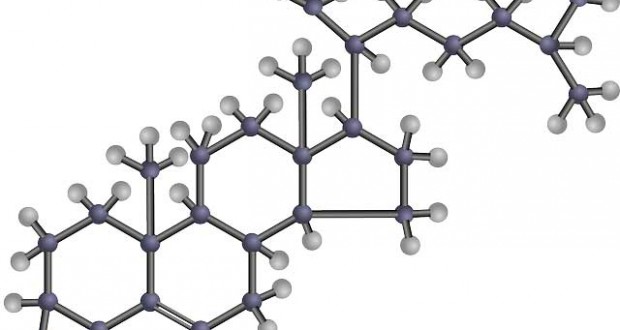Cholesterol is a steroid compound which occurs with the breakdown of fat. Since cholesterol contribute to the development of bile acid of sex hormones and hormone of the adrenal gland, it is essential for the body.

Cholesterol can’t dissolve in the blood. It must be transported through your bloodstream by carriers called lipoproteins, which got their name because they’re made of fat (lipid) and proteins.
The two types of lipoproteins that carry cholesterol to and from cells are low-density lipoprotein, or LDL, and high-density lipoprotein, or HDL. LDL cholesterol and HDL cholesterol, along with one fifth of your triglyceride level, make up your total cholesterol count, which can be determined through a blood test.
Total blood (or serum) cholesterol
Your total cholesterol score is calculated using the following equation: HDL + LDL + 20 percent of your triglyceride level.
HDL (good) cholesterol
With HDL cholesterol, higher levels are better. Low HDL cholesterol puts you at higher risk for heart disease. People with high blood triglycerides usually also have lower HDL cholesterol. Genetic factors, type 2 diabetes, smoking, being overweight and being sedentary can all result in lower HDL cholesterol.
LDL (bad) cholesterol
A low LDL cholesterol level is considered good for your heart health. However, your LDL number should no longer be the main factor in guiding treatment to prevent heart attack and stroke, according to new guidelines from the American Heart Association. For patients taking statins, the guidelines say they no longer need to get LDL cholesterol levels down to a specific target number. A diet high in saturated and trans fats raises LDL cholesterol.
Triglycerides
Triglyceride is the most common type of fat in the body. Normal triglyceride levels vary by age and sex. A high triglyceride level combined with low HDL cholesterol or high LDL cholesterol is associated with atherosclerosis, the buildup of fatty deposits in artery walls that increases the risk for heart attack and stroke
Trans Fats
Cholesterol comes from two sources: your body and food. Your body, and especially your liver, makes all the cholesterol you need and circulates it through the blood. But cholesterol is also found in foods from animal sources, such as meat, poultry and full-fat dairy products. Your liver produces more cholesterol when you eat a diet high in saturated and trans fats.
There are two broad types of trans fats found in foods: naturally-occurring and artificial trans fats. Naturally-occurring trans fats are produced in the gut of some animals and foods made from these animals (e.g., milk and meat products) may contain small quantities of these fats. Artificial trans fats (or trans fatty acids) are created in an industrial process that adds hydrogen to liquid vegetable oils to make them more solid.
The primary dietary source for trans fats in processed food is “partially hydrogenated oils.
Here are some ways to avoid them:
- Eat a dietary pattern that emphasizes fruits, vegetables, whole grains, low-fat dairy products, poultry, fish and nuts. Also limit red meat and sugary foods and beverages.
- Use naturally occurring, unhydrogenated vegetable oils such as canola, safflower, sunflower or olive oil most often.
- Look for processed foods made with unhydrogenated oil rather than partially hydrogenated or hydrogenated vegetable oils or saturated fat.
- Use soft margarine as a substitute for butter, and choose soft margarines (liquid or tub varieties) over harder stick forms. Look for “0 g trans fat” on the Nutrition Facts label and no hydrogenated oils in the ingredients list.
- Doughnuts, cookies, crackers, muffins, pies and cakes are examples of foods that may contain trans fat. Limit how frequently you eat them.
- Limit commercially fried foods and baked goods made with shortening or partially hydrogenated vegetable oils. Not only are these foods very high in fat, but that fat is also likely to be trans fat.
Atherosclerosis
Atherosclerosis is the process of accumulation of fat in the inner wall of the large and medium-sized arteries. In the beginning it was tiny crystals of cholesterol, which gradually create deposits (plaques), which narrow the lumen of the vessel. Followed by scarring and hardening of the wall of blood vessels. Thus blood vessels prone to rupture. These changes in the interior of the blood vessel leading to clots or give rise to a phenomenon known as thrombosis.
Reasons for atherosclerosis:
- increased concentration of cholesterol in the form of low density lipoprotein (LDL)
- diabetes, gender (male sex hormones), smoking and genetic factors increase the concentration of LDL in the blood.
What is increased concentration of cholesterol in the blood?
For healthy individuals, whose family has heart disease, the level of total cholesterol in the blood should not be greater than 5 mmol / l, whereas HDL is greater than 1 mmol / l, while LDL is less than 3 mmol / l.
Any elevated cholesterol over these reference values (especially LDL cholesterol) increases the risk of heart disease.
When we need to check the level of cholesterol in the blood?
If the patient has no health problems, such as diabetes, kidney disease or diseases of the thyroid gland, it is above 40 th year to check the level of cholesterol in the blood.
If the patient has in their family suffering from heart disease and stroke, ie a genetic predisposition to these diseases, if there is smoke or high blood pressure should then 20th year at least twice a year to control blood cholesterol.
Do women and men alike are at risk of high cholesterol?
Women have a lower risk of heart disease and blood vessels than men due to the influence of female sex hormones (estrogens), but only until menopause. Then, women have the same risk as men, and sometimes the risk is greater.
Men are more endangered than women because male sex hormone, testosterone, lowers levels of HDL cholesterol, which acts so protective preventing fatty deposits on the walls of blood vessels.
Can increased levels of cholesterol cause infarction?
Increased cholesterol is the most important cause of heart attack, along with smoking and high blood pressure. Therefore, in people with heart disease level of LDL cholesterol in the blood must not exceed values of 2.5 mmol / l.





















